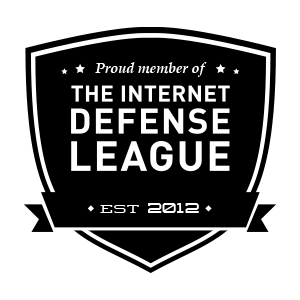
Expert Assessment Attachment Parental Alienation
Are you a Judge in high Conflict family cases?
Do you have Cases with Allegation of Parental Alienation ?
This Cases Demands a Ekspert in Attachment Based Parental Alienation Assessment. Mental Violence and Child Psychological Abuse.
This pathology is complex, and differentiating it from current trauma is vitally important. That’s why children and families displaying this form of attachment-related pathology should receive the professional designation as a “special population” who require specialized professional knowledge and expertise to competently assess, diagnose, and treat.
The attachment system used by adolescents is seen as a “safety regulating system” whose main function is to promote physical and psychological safety. There are 2 different events that can trigger the attachment system.
Parental ALIENATION IT IS NOT A BUZZ WORD!
Parental Alienation is Mental Violence from a near relation, Child Psychological Abuse..DSM-5 diagnosis of V995.51 Child Psychological Abuse 309.4 Adjustment disorder V61.20 Parent Relationship Problem V61,29 Child Affected by Parental Relationship Distress V995,51 Child Psychological Abuse, confirmed.ICD 11 siger sådan her QE52,0 Caregiver relationship problem. DSM 5 CAPDR Child Affected By Parental Relationship Distress.. It need to be handle by a Criminal court,
Treatment indications
A confirmed DSM-5 Diagnosis of the child Psychological Abuse Warrants the following Child Protection and Treatment response:
- Protective Separation Period; A period of Protective Separation of the Child from the psychologically abusive parenting practice of the allied parent is required in order to protect the child from ongoing exposure to psychologically abusive parenting practice’s and allow for the treatment and recovery of the child normal range and healthy development. Attempting therapy without first establishing a period of protective separation from the pathogenic parenting practice’s of the allied parent will continue the child’s ongoing exposure to the psychologically abusive parenting of the allied parent that is creating significant developmental pathology, personality disorder pathology, and delusional-psychiatric pathology in the child, and will lead to the child becoming a “psychological battleground” between the treatment goals of restoring the child’s healthy and normal-range development and the continuing pathogenic goals of the allied parent to create and maintain the child’s pathology.
- Treatment Appropriate parent-child psychotherapy should be initiated to recover and heal the damaged parent-child affectionate bond with the Target Parent and resolve the impact of the prior psychological abuse inflicted on the child by the allied Parent distorted and psychological abusive parenting practices in order to restore the child healthy emotional and psychological development.
- Collateral Therapy: The allied Parent should be required to obtain collateral individual therapy with the treatment goal of fostering insight into the cause of the prior abusive parenting practice’s.
- End of Protective Separation; The Protective separation period should be ended once the child symptoms associated with the prior psychologically abusive parenting practice’s of the allied Parent are successfully resolved and the child’s recovery is stabilized.
- Restoration of the relationship with the abusive parent; The restoration of the child’s relationship with the formerly abusive parent should include sufficient safeguards to ensure that the psychological abuse of the child does not resume once contact with the allied Parent is restored. The demonstrated the cooperation of the father with his individual collateral therapy and his demonstrated insight into the cause of the prior psychological abuse of the child would represent important considerations in the level of safeguards needed to ensure the child protection
- Relapse; If the child’s symptoms reoccur once the child’s contact with the allied Parent is restored. Then another period of protective separation will be need in order to again recover the child’s normal-range and healthy development , and additional protective safeguards will be warranted prior to once again exposing the child to the pathogenic parenting practice of the father.
Child Response to a Protective Separation.
The child may initially respond to a protective separations from the currently allied parent
With increased protest behavior and defiance. This child response represents an emotional-behavioral tantrum reflecting the child’s currently over-empowered status relative to accepting authority (i.e. Both parental authority and the authority of the court). Responding to emotional display of the child tantrum behavior with calm and steady purpose that restores the child to an appropriate social and family hierarchy of cooperation with the court and parental authority will be important to supporting successful family therapy and the resolutions of the child’s symptoms. Any concern regarding the child’s expressed distress at the protective separation from the currently allied parent should recognize that the child’s fully capable of ending the proactive separation period by becoming non-symptomatic. If the child wishes a termination of the protective separation period, then the child simply needs to evidence normal-range affectional child behavior in response to the normal-range parenting practice’s of the Target Parent , which is under the treatment-related monitoring of the family therapist.
Ending the Protective Separation period
The protective separation period from the pathogenic and psychologically abusive parenting practice of the allied parent should be ended upon the successful treatment and resolution of the child’s symptoms and restoration of the child’s healthy and normal range development . The treating family therapist should seek courts approval to end the child’s protective separation from the pathogenic parenting practices of the currently allied parent based on the treatment-related gains achieved. Progress report to the parents and to the court from the treating family therapist should be provided at least every six months.


